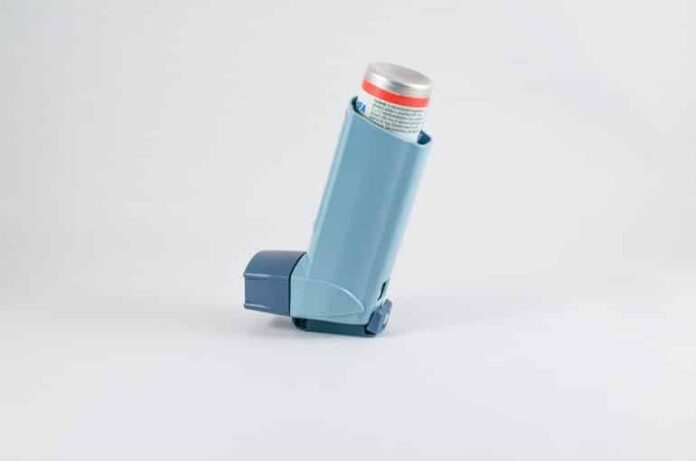[ad_1]
Summary: Airway hyperresponsiveness in asthma induced by methacholine is partly due to mast cells, a new study reports.
Source: Uppsala University
In asthma, the airways become hyperresponsive. Researchers from Uppsala University have found a new mechanism that contributes to, and explains, airway hyperresponsiveness.
The results are published in the scientific journal Allergy.
Some 10 per cent of Sweden’s population suffer from asthma. In asthmatics, the airways are hyperresponsive (overreactive) to various types of stimuli, such as cold air, physical exertion and chemicals. The airways become constricted, making breathing difficult.
To diagnose asthma, a “methacholine test” is commonly used to determine whether a person is showing signs of airway hyperresponsiveness. Methacholine binds to what are known as muscarinic receptors in the smooth muscle cells lining the inside of the trachea. These muscle cells then begin to contract, causing constriction of the trachea.
In the new study, the scientists show that the airway hyperresponsiveness induced by methacholine is due partly to the body’s mast cells. The research was conducted using a mouse model of asthma, where the mice were made allergic to house dust mites.
Mast cells, which are immune cells of a specific type belonging to the innate immune system, are found mainly in tissues that are in contact with the external environment, such as the airways and the skin.
Because of their location and the fact that they have numerous different receptors capable of recognising parts of foreign or pathogenic substances, they react quickly and become activated. In their cytoplasm, mast cells have storage capsules, known as granules, in which some substances are stored in their active form.
When the mast cell is activated, these substances can be rapidly released and provoke a physiological reaction. This plays a major part in the body’s defence against pathogens, but in asthma and other diseases where the body starts reacting against harmless substances in the environment, it becomes a problem.

In their study, the researchers were able to demonstrate that the mast cells contribute to airway hyperresponsiveness by having a receptor that recognises methacholine: muscarinic receptor-3 (M3). When methacholine binds M3, the mast cells release serotonin. This then acts on nerve cells, which in turn control the airways. Thereafter, the airways produce acetylcholine, which also acts on M3 in smooth muscle cells and makes the trachea contract even more. A vicious cycle is under way.
The scientists’ discovery also means that drugs like tiotropium, which were previously thought to work solely by blocking M3 in smooth muscle, are probably also efficacious because they prevent activation through M3 in mast cells. Accordingly, the ability of mast cells to rapidly release serotonin in response to various stimuli, thereby contributing to airway hyperresponsiveness, has been underestimated.
Table of Contents
About this asthma research news
Source: Uppsala University
Contact: Press Office – Uppsala University
Image: The image is in the public domain
Original Research: Open access.
“Mast cell-derived serotonin enhances methacholine-induced airway hyperresponsiveness in house dust mite-induced experimental asthma” by Mendez-Enriquez E, Alvarado-Vazquez PA, Abma W, Simonson OE, Rodin S, Feyerabend TB, Rodewald HR, Malinovschi A, Janson C, Adner M and Hallgren J. Allergy
Abstract
Mast cell-derived serotonin enhances methacholine-induced airway hyperresponsiveness in house dust mite-induced experimental asthma
Background
Airway hyperresponsiveness (AHR) is a feature of asthma in which airways are hyperreactive to stimuli causing extensive airway narrowing. Methacholine provocations assess AHR in asthma patients mainly by direct stimulation of smooth muscle cells. Using in vivo mouse models, mast cells have been implicated in AHR, but the mechanism behind has remained unknown.
Methods
Cpa3Cre/+mice, which lack mast cells, were used to assess the role of mast cells in house dust mite (HDM)‐induced experimental asthma. Effects of methacholine in presence or absence of ketanserin were assessed on lung function and in lung mast cells in vitro. Airway inflammation, mast cell accumulation and activation, smooth muscle proliferation, and HDM‐induced bronchoconstriction were evaluated.
Results
Repeated intranasal HDM sensitization induced allergic airway inflammation associated with accumulation and activation of lung mast cells. Lack of mast cells, absence of activating Fc‐receptors, or antagonizing serotonin (5‐HT)2A receptors abolished HDM‐induced trachea contractions. HDM‐sensitized mice lacking mast cells had diminished lung‐associated 5‐HT levels, reduced AHR and methacholine‐induced airway contraction, while blocking 5‐HT2A receptors in wild types eliminated AHR, implying that mast cells contribute to AHR by releasing 5‐HT. Primary mouse and human lung mast cells express muscarinic M3 receptors. Mouse lung mast cells store 5‐HT intracellularly, and methacholine induces release of 5‐HT from lung‐derived mouse mast cells and Ca2+ flux in human LAD‐2 mast cells.
Conclusions
Methacholine activates mast cells to release 5‐HT, which by acting on 5‐HT2A receptors enhances bronchoconstriction and AHR. Thus, M3‐directed asthma treatments like tiotropium may also act by targeting mast cells.
[ad_2]
Source link













